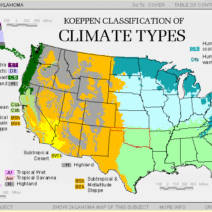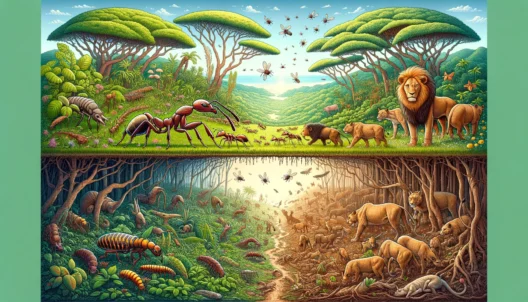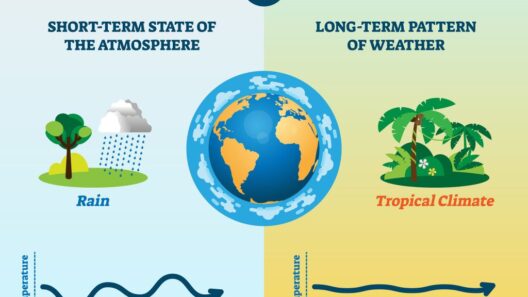What Is the Climate in a Temperate Deciduous Forest? Home of Four Seasons
Temperate deciduous forests are among the most diverse and visually striking biomes on Earth, located in regions with a temperate climate characterized by four distinct seasons: spring, summer, autumn, and winter. Each season brings unique climatic conditions that dramatically influence the ecological dynamics within these forests. Understanding the climate of temperate deciduous forests is crucial for appreciating their biodiversity and the environmental factors that sustain them.
Seasonal Variation
The hallmark of temperate deciduous forests is their seasonal variation. Each of the four seasons presents a unique combination of temperature, precipitation, and daylight hours that shapes the behavior of both flora and fauna within the forest.
Spring
As winter recedes, temperate deciduous forests awaken in spring. Temperatures begin to rise, typically ranging from 40°F to 70°F (4°C to 21°C). The sun’s increasing intensity prompts the budding of leaves on deciduous trees such as oaks, maples, and birches. During this time, average precipitation levels rise, enhancing soil moisture and stimulating plant growth. The symphony of blooming wildflowers and the return of migratory birds contribute to a vibrant resurgence of life.
Summer
Summer in a temperate deciduous forest is characterized by warm to hot temperatures, often reaching between 70°F and 90°F (21°C to 32°C). This is a period of maximum growth, where deciduous trees develop a full canopy, blocking much of the sunlight from reaching the forest floor. The abundance of vegetation not only supports a diverse array of wildlife but also influences the microclimate beneath the canopy. In summer, humidity levels can increase, leading to frequent thunderstorms, which contribute valuable rainfall. As a result, the forest becomes an arena of life, with animals engaging in various behavioral rituals, from nesting to foraging.
Autumn
As summer transitions into autumn, the forest begins to display a breathtaking array of colors. The decreasing temperatures, now ranging from 45°F to 75°F (7°C to 24°C), signal the onset of leaf senescence. Trees prepare for winter by reabsorbing nutrients from their leaves, prompting the transformation of chlorophyll into vibrant reds, oranges, and yellows. This aesthetic phenomenon not only captivates observers but also signifies a period of preparation for the colder months ahead. Rainfall is typical during the early autumn months, contributing to the fertility of the soil as the leaves decompose, enriching the ground for future growth.
Winter
Winter in temperate deciduous forests introduces a stark contrast to earlier seasons. Temperatures frequently plunge, often ranging from 20°F to 40°F (-6°C to 4°C). The forest becomes a quiet, snow-covered landscape, a realm largely devoid of the vibrant life seen during other seasons. Many tree species are now leafless, a characteristic adaptation to conserve moisture and energy during this frigid period. Despite the apparent dormancy, life continues in various forms; many animals enter a state of hibernation, while others adapt by growing thicker fur or foraging for remaining food sources beneath the snow. Winter is a time of resilience, illustrating the survival strategies of diverse species.
Microclimates within the Forest
Impact of Climate Change
With the increasing impacts of climate change, temperate deciduous forests are vulnerable to dramatic shifts in their climate patterns. Rising global temperatures could alter precipitation regimes, leading to more intense droughts or floods. These changes can have detrimental effects on species composition, migratory patterns, and overall forest health. For instance, warmer winters may disrupt hibernation cycles, while shifts in seasonal timing can affect blooming periods for various plant species. Consequently, understanding the climate dynamics of these forests is essential for conservation strategies aimed at preserving their ecological integrity.
Conservation and Future Outlook
Effective conservation strategies for temperate deciduous forests necessitate an appreciation of their climatic conditions. This encompasses not only the preservation of existing habitats but also the restoration of degraded areas to facilitate species resilience. Increased public awareness and policy initiatives addressing climate change will play a pivotal role in safeguarding these forests for future generations. Collaborative efforts among local communities, governments, and environmental organizations are essential for promoting sustainable practices that bolster the health of these invaluable ecosystems.
In conclusion, temperate deciduous forests are remarkable ecosystems that showcase the intricate relationship between climate and biodiversity. Their seasonal cycles create dynamic environments that support a wealth of life. Understanding the climate of these forests, particularly in the context of current environmental challenges, is vital for ensuring their continued existence and the myriad of benefits they provide to our planet.








